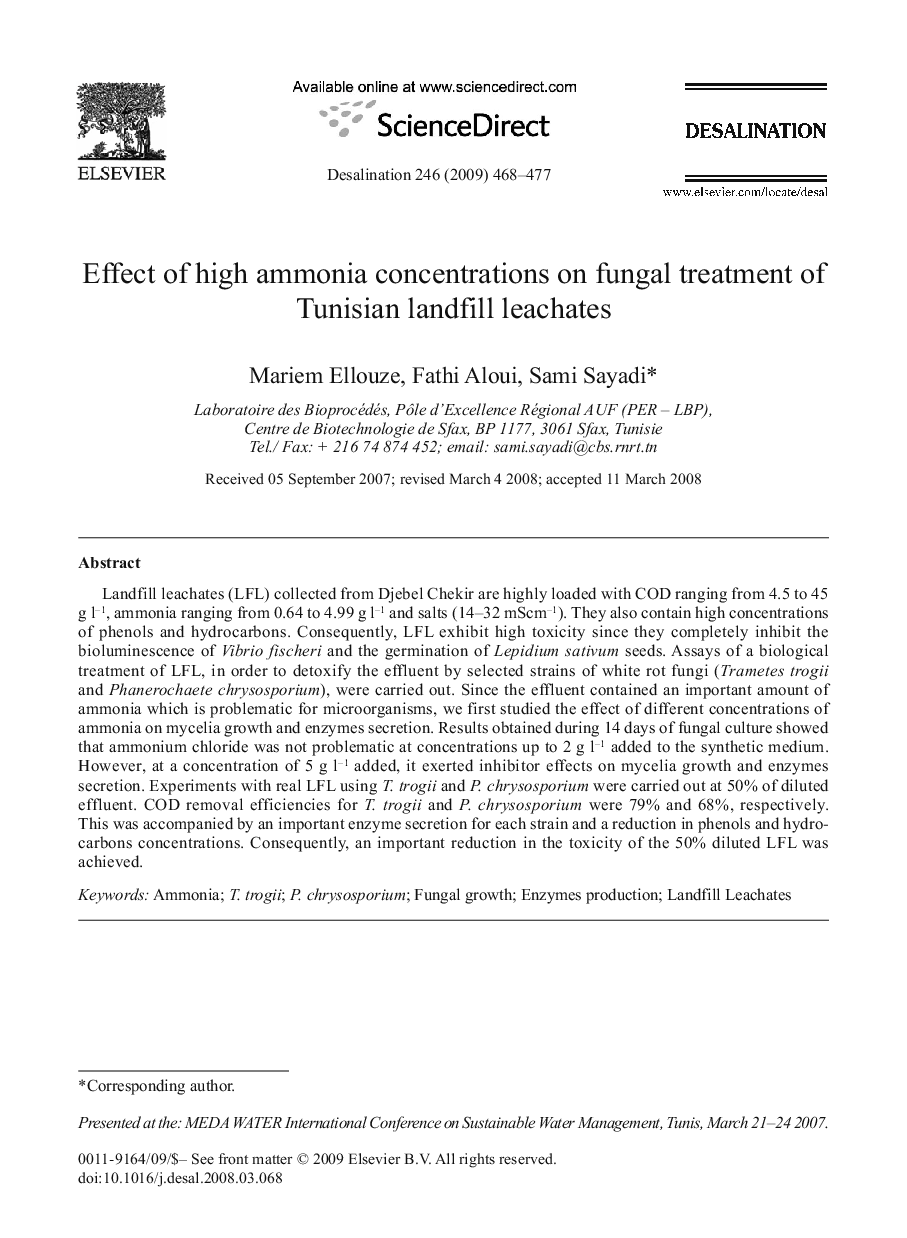| کد مقاله | کد نشریه | سال انتشار | مقاله انگلیسی | نسخه تمام متن |
|---|---|---|---|---|
| 626679 | 1455444 | 2009 | 10 صفحه PDF | دانلود رایگان |

Landfill leachates (LFL) collected from Djebel Chekir are highly loaded with COD ranging from 4.5 to 45 g l–1, ammonia ranging from 0.64 to 4.99 g l–1 and salts (14–32 mScm–1). They also contain high concentrations of phenols and hydrocarbons. Consequently, LFL exhibit high toxicity since they completely inhibit the bioluminescence of Vibrio fischeri and the germination of Lepidium sativum seeds. Assays of a biological treatment of LFL, in order to detoxify the effluent by selected strains of white rot fungi (Trametes trogii and Phanerochaete chrysosporium), were carried out. Since the effluent contained an important amount of ammonia which is problematic for microorganisms, we first studied the effect of different concentrations of ammonia on mycelia growth and enzymes secretion. Results obtained during 14 days of fungal culture showed that ammonium chloride was not problematic at concentrations up to 2 g l–1 added to the synthetic medium. However, at a concentration of 5 g l–1 added, it exerted inhibitor effects on mycelia growth and enzymes secretion. Experiments with real LFL using T. trogii and P. chrysosporium were carried out at 50% of diluted effluent. COD removal efficiencies for T. trogii and P. chrysosporium were 79% and 68%, respectively. This was accompanied by an important enzyme secretion for each strain and a reduction in phenols and hydrocarbons concentrations. Consequently, an important reduction in the toxicity of the 50% diluted LFL was achieved.
Journal: Desalination - Volume 246, Issues 1–3, 30 September 2009, Pages 468-477